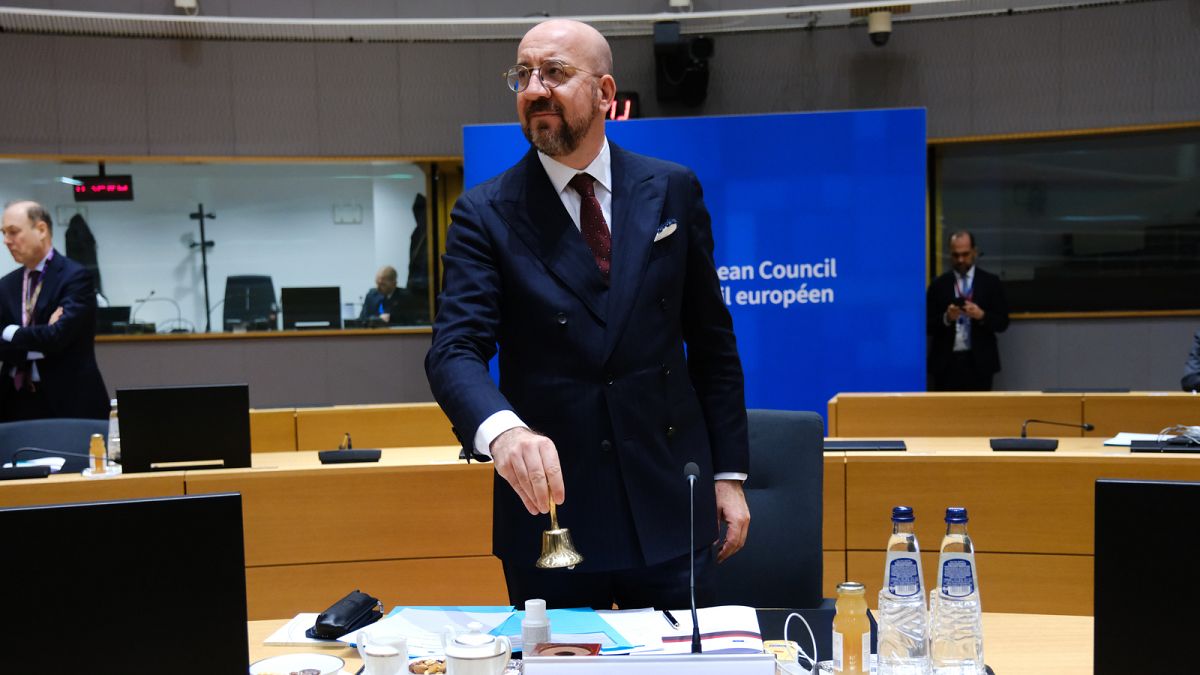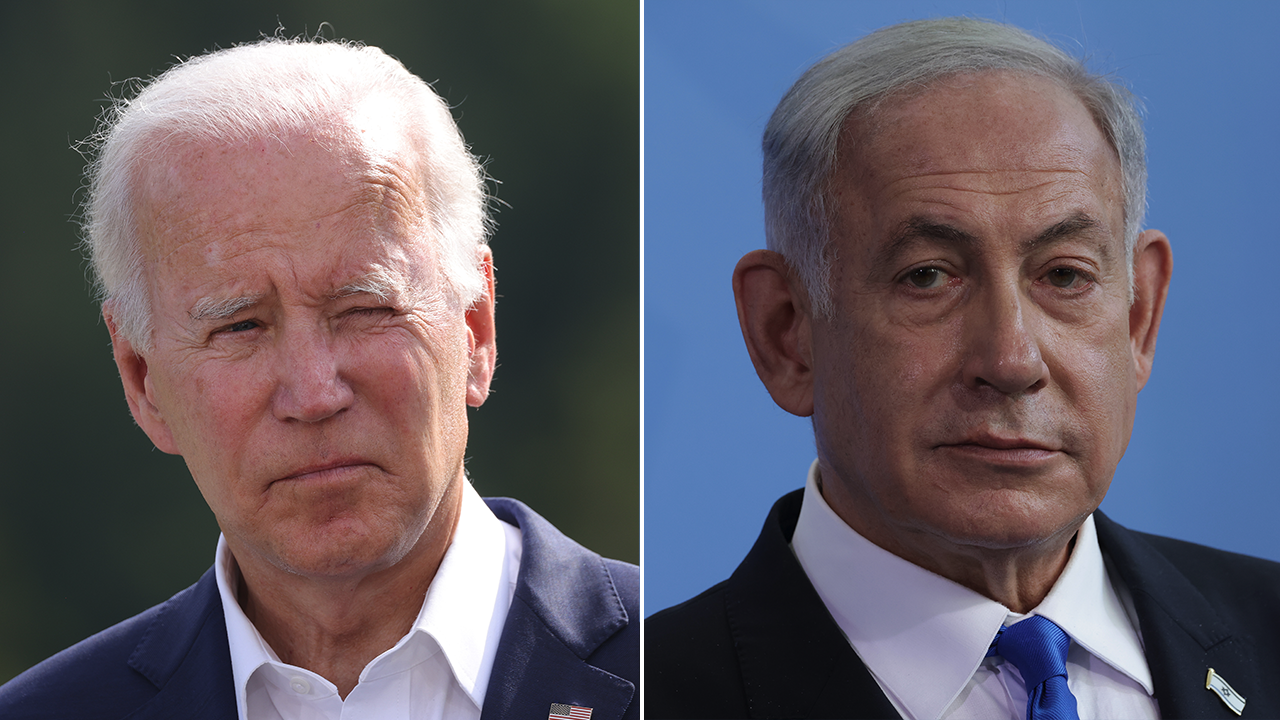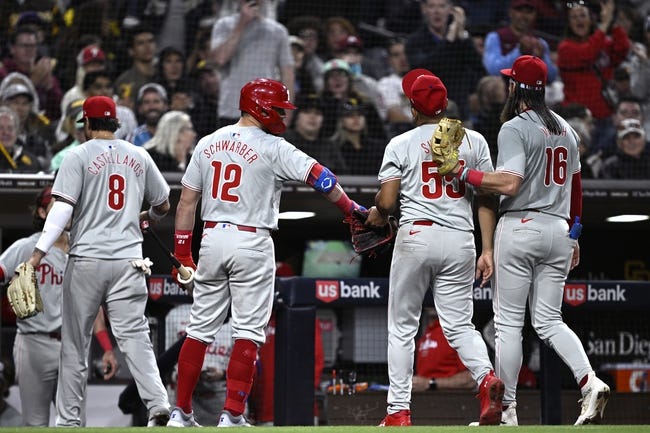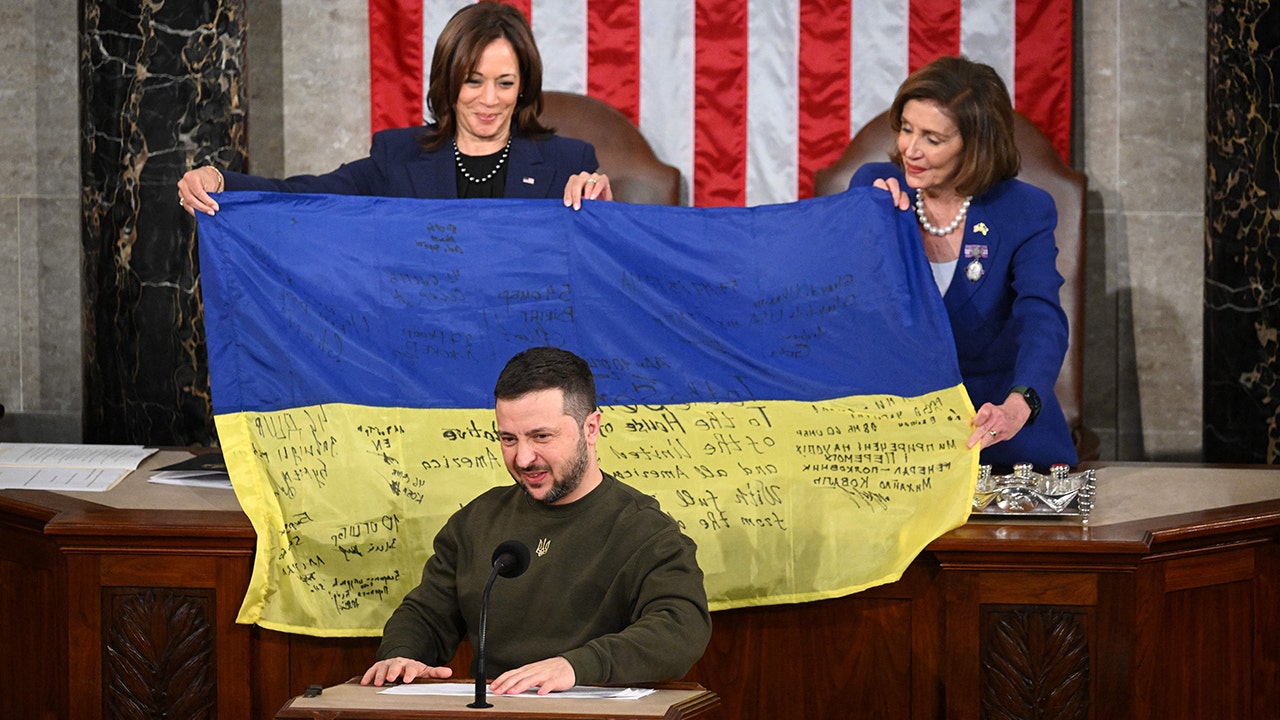Exceptionally warm March weather propelled Washington’s cherry blossoms to their second-earliest peak bloom in more than a century of records Sunday, reflecting the growing influence of human-caused climate change on the famed trees.
Washington, D.C
Cherry blossoms hit near-record early peak, a sign of climate change

Sunday’s peak bloom at the Tidal Basin, about two weeks earlier than normal, tied with 2000 as the second earliest on record; only the March 15, 1990, bloom came sooner in observations that date to 1921. This year’s peak bloom was so early, it preceded the official start of the National Cherry Blossom Festival, which runs from March 20 to April 14, and was also ahead of the earliest projections.
Peak bloom, the last phase of a six-stage bud development cycle, occurs when 70 percent of the cherry trees are flowering. The buds sped through this cycle in just 15 days, faster than any other year in at least the past two decades.
The early bloom fits right into recent trends.
As March temperatures have climbed over the past century, the average peak bloom date has advanced about six days, from April 4 to March 30. Including this year, each of the past five has seen the peak before March 29. Last year, it was on March 23 — more than a week early.
Temperatures this March have averaged more than 9 degrees above normal, ranking second warmest on record. Freezing temperatures haven’t occurred since Feb. 26.
The mild weather drew thousands to the Tidal Basin on Saturday and Sunday as the blossoms reached peak and temperatures soared into the mid-60s to low 70s, about 10 to 15 degrees above normal.
Groups flocked to catch a glimpse of the beloved tree known as Stumpy before it’s removed as part of multiyear plan to repair sea walls that have deteriorated since their construction. Some of the sea walls have settled by as much as five feet, the National Park Service said, while tidal water levels are increasing because of sea level rise — another indicator of climate change. As Stumpy reached peak bloom for the last time, floodwater surrounded it.
Elsewhere along the basin’s 2.1-mile trail Saturday, a bride and groom posed for photos under a cherry tree in full bloom near the Jefferson Memorial, taking advantage of cloudless skies and a gentle breeze.
Opposite the Jefferson, a crowd assembled for a gender reveal party. Pink glitter exploded under a cluster of cherry trees, presaging a baby girl. The flying glitter looked like cherry blossom petals blowing in the breeze.
Almost every cherry tree at the Tidal Basin attracted people taking selfies and pictures or providing shade for family picnics.
A favorable forecast may allow visitors to enjoy the blossoms for another week or so. Whereas rainy and windy weather can strip the blossom petals and curtail the peak bloom period, this week is predicted to be mostly dry.
Some gusty winds on Tuesday could dislodge petals, but breezes are forecast to ease after that.
The trend toward chillier weather should prolong the bloom period. (Very warm weather tends to shorten it.) As long as there isn’t an unforeseen hard freeze, which would cause petals to wilt, the highs in the 50s and lows in the 30s should help extend the blossoms’ shelf life.

Washington, D.C
Washington, D.C. shouldn’t run the nation’s economy

In the popular mind, nearly every American city owes its prominence to one private industry or another: steel barons built Pittsburgh, modern finance defined New York City, San Francisco and Austin have ridden high on technology. The one big city without a defining private industry, of course, is Washington, D.C., home of America’s federal government. That’s why it’s so odd that many on the right are now championing “industrial policy” efforts that would try to transform D.C. into a center of economic innovation.
Indeed, proposals for this heavy level of government engagement in the economy, once considered by many on the right as a crony-capitalist venture favored mostly by Democrats, has become increasingly popular with Republicans ranging from presidential candidate Donald Trump to Florida Sen. Marco Rubio. The sheer size of the federal government – more than a fifth of the economy – means that a totally hands-off attitude towards industry is impossible. But, even if the government can’t stay out of the economy entirely, recent history shows it can still foster innovation without picking winners and losers.
The actions typically thought of as industrial policy have an undeniable allure: nearly all experts consider important certain sectors such as artificial intelligence, energy production and biomedicine. By earmarking resources, changing regulations and imposing tariffs on non-U.S. industries and companies, the thinking goes that D.C. can secure prosperity. This is the fundamental approach taken by the Biden administration’s Inflation Reduction Act subsidies for green energy as well as proposals from Republicans to bolster heavy manufacturing and fossil-fuel production.
But expecting these efforts to work flies in the face of history. Since World War II, nearly every president has picked out a favored industry and tried to slant things in its direction. The Trump administration proposed billions of subsidies and even more costly regulations on competitors intended to benefit coal companies which slumped anyway. Bill Clinton’s administration spent millions on a “supercar” project that angered environmentalists and set back America’s efforts to build hybrid vehicles. Richard Nixon’s Department of Housing and Urban development launched an ambitious effort to change how housing got built and ended up making housing more expensive.
American economic leadership in the 20th century was not the result of a bureaucratically overseen industrial policy. Our nation’s dynamism flows from a broadly supportive government role that involves multi-use infrastructure, limited but important support for science and regulatory certainty.
The government’s role has been most visible in major projects like the interstate highway system and modern internet. While both would not have existed without heavy federal subsidies, neither of these projects was intended to benefit one specific sector. Nobody wanted “leadership” or “jobs” in asphalt or fiber-optic cable production. Instead, the architects of both intended to create accessible scaffolding upon which the private sector could experiment, innovate and scale. Fast-food restaurants probably gained more from the interstate system than roadbuilders.
Similarly, the breakthroughs in technology emerged from regulatory environments where the government’s role was to lay the groundwork – funding basic research, experimenting with a few pilot programs, and then stepping back to allow the private sector to take the lead in development, commercialization and scale. This approach succeeded because it created new knowledge in every field of human endeavor rather than having politicians decide what was important.
Most important, the establishment of limited, efficient regulatory systems that offer clarity and certainty for private enterprises has been critical. Such frameworks enable businesses to plan for the long term, secure in their understanding of the rules of the game. Right now, the American tort law system punishes entrepreneurs and burdensome regulations favor slow-moving incumbent companies. Furthermore, many legacy regulations are ill-suited to the characteristics of new technologies.
For example, the foremost challenge faced by green industries is regulatory burdens, whereas most green subsidies in the Inflation Reduction Act constitute corporate welfare. Comprehensive reforms to outmoded power-industry regulation and
As policymakers grapple with the best path forward, it is imperative to remember that the strength of the U.S. economy lies in freedom, diversity and innovation. Principles that emphasize a limited government role could pave the way for a new era of American leadership in the global economy in a way that picking winners and losers never has. It is a no-brainer that Washington, D.C. shouldn’t run the economy.
Eli Lehrer is president of the R Street Institute.
Washington, D.C
D.C. United holds on tight to hold off shorthanded Sounders in 2-1 win

United (3-3-4) ended a three-game winless streak (0-2-1) and won for just the second time since opening day.
It did not come easily. Despite playing a man up for more than 60 minutes, United performed as if it were the shorthanded team. The Sounders applied enormous pressure in the second half and threatened to sneak out with a point. Alex Bono’s sensational save in the 88th minute preserved the victory.
“We could have managed the game much better,” said Benteke, whose eight goals are one behind MLS leader Lionel Messi. “This is a part of the game where we have to improve, to complete our game and to manage the game.”
After a subpar performance at New York City FC last weekend, United had reason for optimism Saturday. Right back Aaron Herrera and midfielder Mateusz Klich returned from yellow-card suspensions, and rookie forward Jacob Murrell, a first-round draft pick from Georgetown, made his first start after five quality appearances as a sub.
United answered Coach Troy Lesesne’s call for a better start than its slumber in New York, playing with purpose and passion. Opportunities, though, were unfulfilled before and after Seattle’s icebreaker.
In the 14th minute, at the end of a long possession that began in Seattle’s end, Jordan Morris crossed to Léo Chú for an uncontested header past Bono.
“Even though we give up the early goal,” Lesesne said, “I still feel like we were pushing the game in the right way.”
The game flipped dramatically when Jared Stroud got behind defender Cody Baker on Christopher McVey’s long ball and was taken down by Frei. Not only did United receive a penalty kick — Benteke converted easily — but Frei was sent off. Andrew Thomas, who started three matches for the injured Frei early this season, entered. With the Sounders (1-5-3) needing to remove an outfield player, Chú was sacrificed.
United took advantage in the 45th minute. Herrera crossed to the back side of the six-yard box. Positioned behind 5-foot-8 Cristian Roldan, the 6-3 Benteke won the aerial battle as if no one was there and powered a six-yard header over the leaping Thomas.
For a team playing with an extra man, United conceded too much space and possession early in the second half, leading to some anxious moments.
“It just was kind of a choppy game,” Lesesne said. “A lot of set pieces, too many fouls from us. That breaks up the rhythm. So that’s something we have to be aware of. We want to be aggressive, but we don’t want to create fouls that slow the game down and then allow them to put balls in our box that are really dangerous.”
Benteke threatened to complete a hat trick in the 59th minute with a booming side volley that skipped over the crossbar, but United continued to struggle keeping possession. João Paulo hit the near post. Martín Rodríguez’s timely tackle in the box prevented Seattle’s Raúl Ruidíaz from shooting deep in the box.
In the waning moments, Bono extended himself to his left to touch aside Albert Rusnak’s header and Cristian Roldan failed to make solid contact inside the six-yard box.
“He’s been phenomenal all year,” center back Lucas Bartlett said of Bono. “We love the relationship we have built. We trust him, and he trusts us.”
The end of six minutes of stoppage time brought relief to the antsy crowd and to a D.C. squad that was clinging desperately to three points.
Here’s what else to know about United’s victory:
During the pregame team photo, players held up Russell Canouse’s No. 6 uniform — a show of support for the 28-year-old midfielder, who is expected to miss the season after having his colon removed last month.
When the sixth minute passed, fans in the supporters’ groups held up small “6” posts and unfurled a banner that read: “Husband. Father. Fighter. 6 Get Well Soon Russell.”
Captain Steven Birnbaum was in uniform for the first time this season — his 11th with the club — after undergoing knee surgery in February. Still about a week from being fully ready, the center back did not play.
Forward Ted Ku-DiPietro (adductor) and defender Conner Antley (calf) remain sidelined. Lesesne said they would need to make “a lot of progress” to return next week against visiting Philadelphia.
With Tyler Miller (25 starts in 2023) back from last fall’s shoulder surgery, Luis Zamudio will go on loan to a team in the second-flight USL Championship. Miller’s return will “create competition [for the starting job], and that’s a good thing,” Lesesne said.
Washington, D.C
A little rain fell in D.C. on Saturday, and a little was a lot

Even that quantity did not seem particularly large, but at Dulles, about 25 miles northwest of the District, it was, in a relative sense, substantial. Saturday was by far the wettest day there in more than three weeks.
In the District, the gray look and damp feel of the day may have amplified the impression made by the small amount of rain that fell.
Thick clouds covered the sky from earliest morning until evening. In the day’s clouded dimness, it sometimes seemed as if the air was filled with tiny droplets, even when no rain was measured.
But in the afternoon, streets and sidewalks glistened with a thin film of moisture, attesting to the actual descent of a fine spring rain.
For much of the darkly overcast day, it appeared as if at any moment the heavens might open, unleashing great torrents.
But in the District, the official rainfall figure remained puny and almost trivial. Yet it still made Saturday the second-wettest day in the city in more than two weeks.
At times in that period, it seemed almost justifiable to inquire of nature about the fate of April’s reputed showers — the showers that are celebrated in song as bringing the flowers that bloom in May.
On April 12, 0.19 inches fell in the District. Since then, Washington’s wettest day was April 15, with 0.14 inches. At Dulles, where the lack of rain has been more noticeable, 0.66 inches fell April 3. Since then, the total measured has been a little less than a quarter-inch.
So, although in many places Saturday’s raindrops may not have amounted to much in the absolute sense, they appeared to be comparatively significant entries on this month’s rainfall ledgers.
-

 Kentucky1 week ago
Kentucky1 week agoKentucky first lady visits Fort Knox schools in honor of Month of the Military Child
-

 World1 week ago
World1 week agoEU leaders weigh Lebanon partnership in response to Middle East crisis
-

 Movie Reviews1 week ago
Movie Reviews1 week agoFilm Review: Challengers – The Knockturnal
-

 World1 week ago
World1 week agoShipping firms plead for UN help amid escalating Middle East conflict
-

 World1 week ago
World1 week agoIranian media says three drones downed after explosions heard in Isfahan
-
News1 week ago
Maryland high school student arrested after authorities discovered a 129-page document detailing school shooting plan, police say | CNN
-

 Fitness1 week ago
Fitness1 week agoFitness with Jamie: Exercising with resistance
-

 Politics1 week ago
Politics1 week agoIsrael hits Iran with 'limited' strikes despite White House opposition
















